10 Most Amazing Temples In India
By - Anurag Thakre
1. Akshardham Temple
Temple
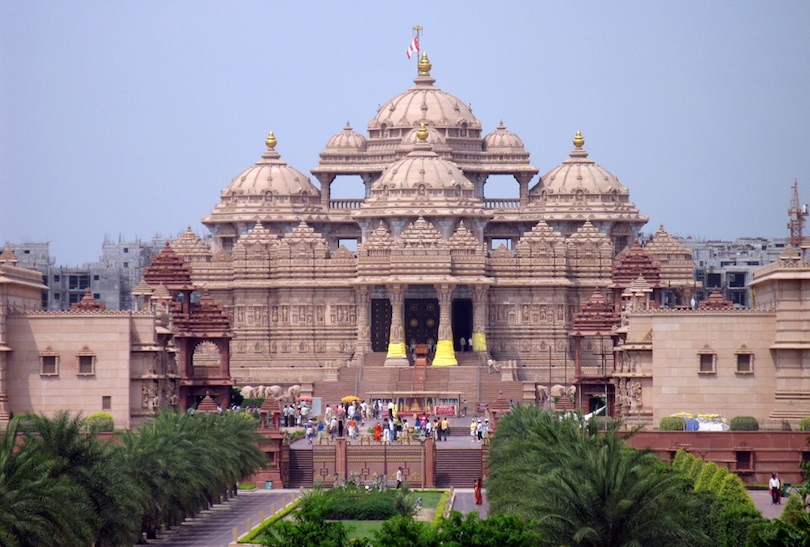 flickr/Gaurav Trivedi
flickr/Gaurav TrivediCompared to some of the other famous temples in India, the Akshardham Temple is fairly new, having been built in 2005. Located in the eastern suburbs of New Delhi, it is the largest Hindu temple in the world and was constructed using ancient techniques. So while new, it also honors the past with stunning, intricately carved sandstone reliefs. As you approach this breathtaking temple, rising high and alone in the middle of the complex, it has an almost fairy-tale-like presence to it. The Akshardham Temple complex, which sits on the banks of the Yamuna River, also features a boat ride that will take you on a journey through India’s history, a musical fountain show and an 11-foot-high, gilded statue of the Bhagwan Swaminarayan, for whom the temple is dedicated.
2. Golden Temple
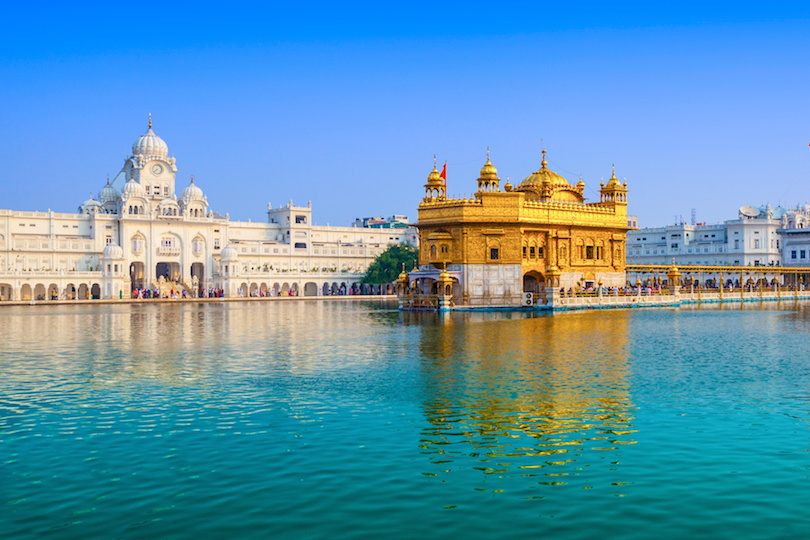
This stunning temple, which sits in the middle of a small, sacred lake, is the most holy of all Sikh shrines. Gold panels cover most of the exterior of the temple and its dome is also gilded — hence its name. The Golden Temple is located in Amritsar, Punjab and has an interesting story. It is said that Buddha once spent time in this location, and then 2,000 years later, the Guru Nanak, who was the founder of the Sikh religion, ended up living here by the lake. Eventually, his followers built a temple on the site. If you visit this temple, try to catch the ceremony held each morning to install the Guru Granth Sahib — the sacred scripture of the Sikhs — into the temple or the ceremony held each night to return it to the Akal Takht, the seat of the Sikh parliament.
3. Meenakshi Amman Temple
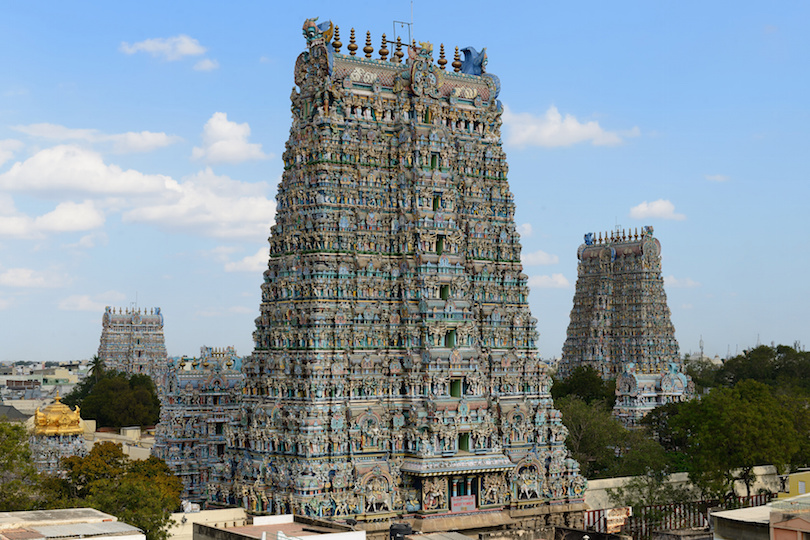
Most of India’s more important temples are relatively plain in color. Not the Meenakshi Amman Temple, which is an explosion of colors. Located in Tamil Nadu on the banks of the Vaigai River, it boasts 14 towers that are covered in 33,000 colorful sculptures and is dedicated to Shiva and a consort, Parvati. There has been a temple on this site since the 6th Century BC, but the original structures were destroyed in the 1300s by the Muslim general Malik Kafur as a part of his mission to convert the area to Islam. The temples were, however, rebuilt in 1559 by the first Nayak king of Madurai. Though the statues on the towers were once plain, paint has been added to them over the years during festivals, which has created the riot of color that can be seen today.
4. Khajuraho Temples
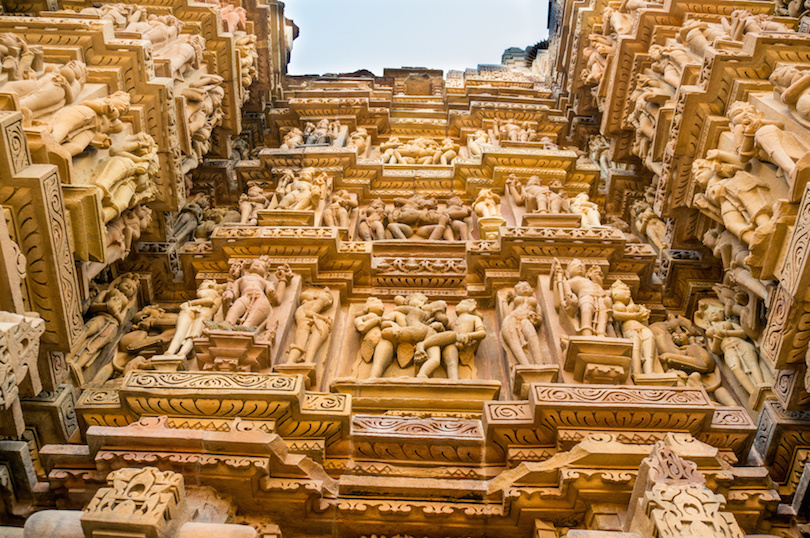
These temples are definitely not for the prudish as they are decorated with explicit erotic carvings. But if you have an open mind, you might find these temples quite spectacular. Built between 900 AD and 1130 AD by the Chandela dynasty, the Khajuraho Temples are located in Madhya Pradesh. It is believed that there may have been as many as 85 temples in the area, but today only 25 remain. It is not really known why these Jain and Hindu temples boast erotic carvings, but they are very detailed and show humans — and sometimes animals — in a variety of hedonistic couplings. One school of thought is that these carvings may have been made in honor of Kama — or the pursuit of pleasure, which is considered one of the four permissible goals in Hinduism.
5. Lotus Temple
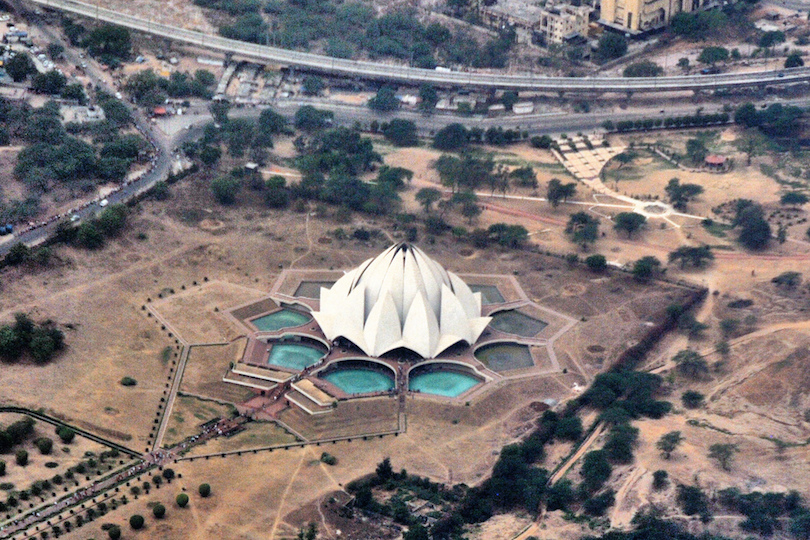 flickr/NA.dir
flickr/NA.dirThe Lotus Temple, which is located in New Delhi, is also known as the Bahai House of Worship or Bahai Mashriqul-Adhkar Temple. Opened to the public in 1986, this is a very interesting looking temple that was built in the shape of a lotus flower. Because the Bahai faith believes in the “Oneness of God, the Oneness of Religions and the Oneness of Mankind,” the Lotus Temple welcomes worshipers of all religions. In addition, no sermons are allowed to be said in this temple. The Lotus Temple is also an architectural treat. The structure, which was designed by Iranian architect Fariborz Sahba, boasts 27 marble petals that give the building its Lotus shape.
6. Kailasa Temple
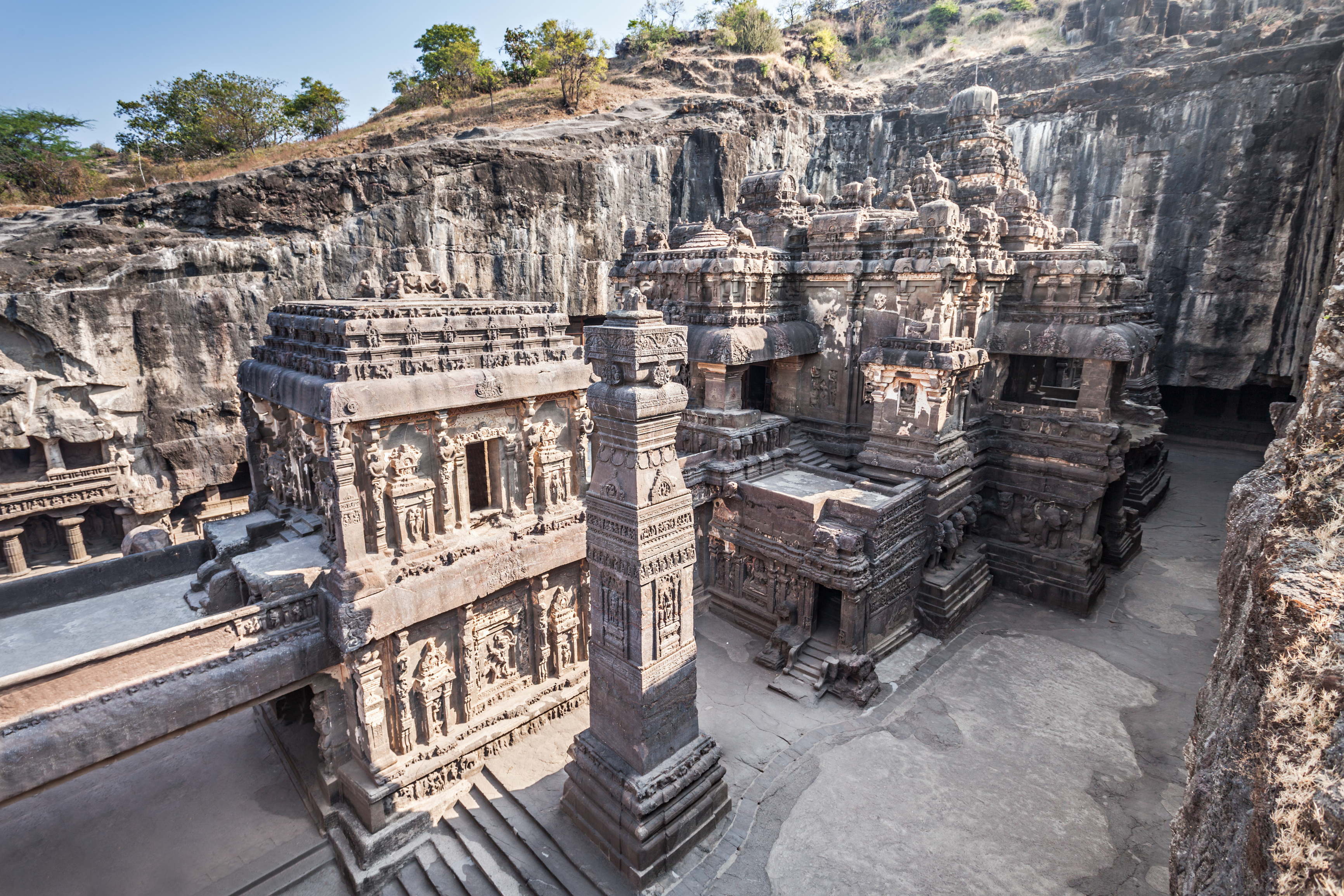 dreamstime/© Saiko3p
dreamstime/© Saiko3pLocated in Ellora, Maharashtra, the Kailasa Temple is truly one of man’s most amazing ancient creations. Built in 760 AD by King Krishna I, this temple was carved from a huge solid rock by hand using chisels, hammers and picks. Because this temple — which was built to represent Mt. Kailasa, the deity Shiva’s home — is so amazing, some people have even theorized that aliens may have built it. And it’s not hard to see why once you visit Kailasa Temple. Although the exterior of the temple is relatively plan, the interior is covered in intricate designs and reliefs and boasts columns that have been carved from solid rock. The temple is just one of 34 man-made caves at the site. Of those caves, 12 are considered Buddhist temples, 17 are Hindu and 5 are Jain.
7. Virupaksha Temple
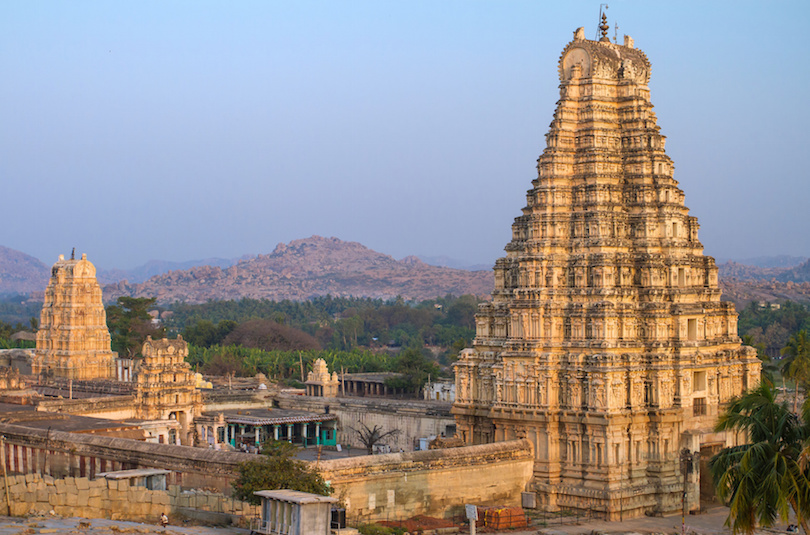
This temple, which is located on the Tungabadra River, is the oldest functioning temple in India, having been in use since the 7th century AD. The Virupaksha Temple was once a part of the royal city of Vijayanagar, which was the capital of the Vijayanagar empire. Although the temple is still intact today, the rest of the city is now mostly in ruins. The Virupaksha Temple complex consists of three towers and is dedicated to the deity Shiva, known here as Virupaksha. While visiting Virupaksha Temple, make sure to get a blessing from the temple elephant, Lakshmi. And if you get there early enough, you may get to witness the elephant’s morning bath ritual
8. Ranakpur Temple
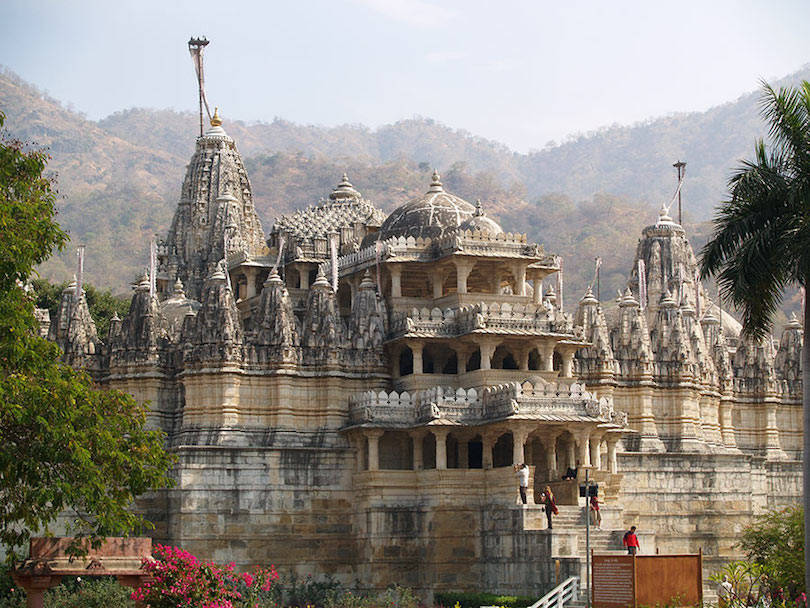 flickr/zz77
flickr/zz77Ranakpur Temple is one of the largest and most important Jain temples in India. It is constructed out of light-colored marble and boasts 29 halls and 80 domes. It is also known for having approximately 1,444 marble pillars that have been individually carved so that no two are alike. The appearance of these columns change color from gold to light blue depending on the time of the day. Ranakpur is a stunning temple that is covered in exquisite and intricate carvings that depict everything from flowers to geometrical patterns. Located in a lush valley between Udaipur and Jodhpur in the village of Ranakpur, this temple is only open in the afternoon to tourists. So make sure to plan your visit accordingly.
9. Mahabodhi Temple

This complex, which is located in Bodhgaya, is a very important holy site for Buddhists. It is built on the site where Siddhartha Gautama — Buddha — was said to have attained Enlightenment. Buddhists also consider this spot to be the naval of the earth and is also believed to be where this earth will end, and the location where the next re-creation of earth will begin. The Mahabodhi Temple, which was built during the late Gupta period, is also one of the oldest brick structures in eastern India. Inside of the temple is a very large, gold-covered, seated Buddha, which has been dressed in bright orange robes. The Mahabodhi Temple complex is also famous for being home to a descendant of the original Bodhi Tree, which was the fig tree under which Buddha was said to have attained enlightenment.
10. Ramanathaswamy Temple
 dreamstime/© Mishrarohan
dreamstime/© MishrarohanThis temple, which is located on Rameswaram Island in Tamil Nadu, is dedicated to the god Shiva. It contains one of the 12 jyotirlingas, which are devotional objects that are supposed to represent Shiva. The Ramanathaswamy Temple is also one of the four destinations on the Char Dham pilgrimage circuit for Hindus. It is believed that if a person journeys to all four, any sins from their past life will be washed away. The large Ramanathaswamy Temple is enclosed by high walls and boasts a 126-foot-tall eastern tower, a 78-foot-high western tower, and 22 holy wells. The temple has the longest corridor among all Hindu temples in India. Devotees are expected to bathe in the waters of these holy wells before entering the inner sanctum of the temple.




2 Comments
Great
ReplyDeleteI have visited 10th one
ReplyDelete